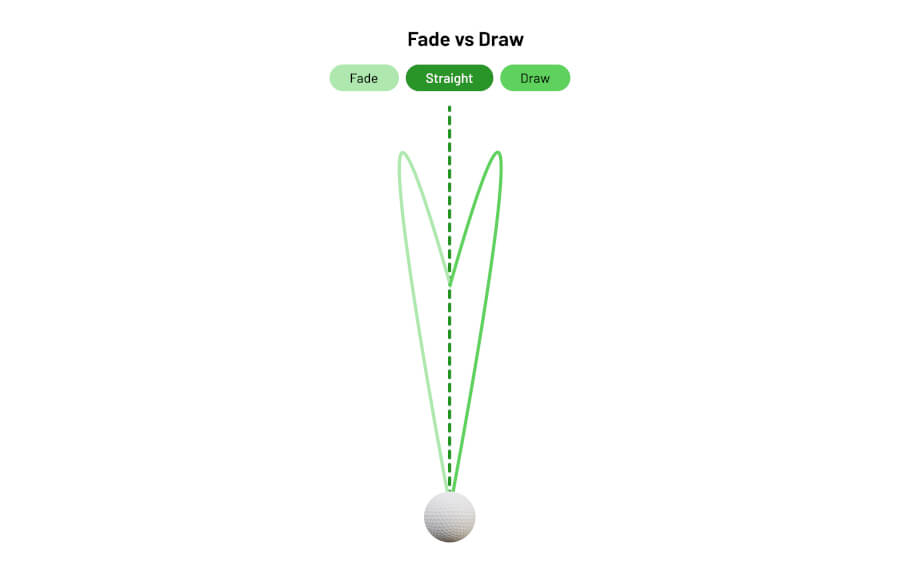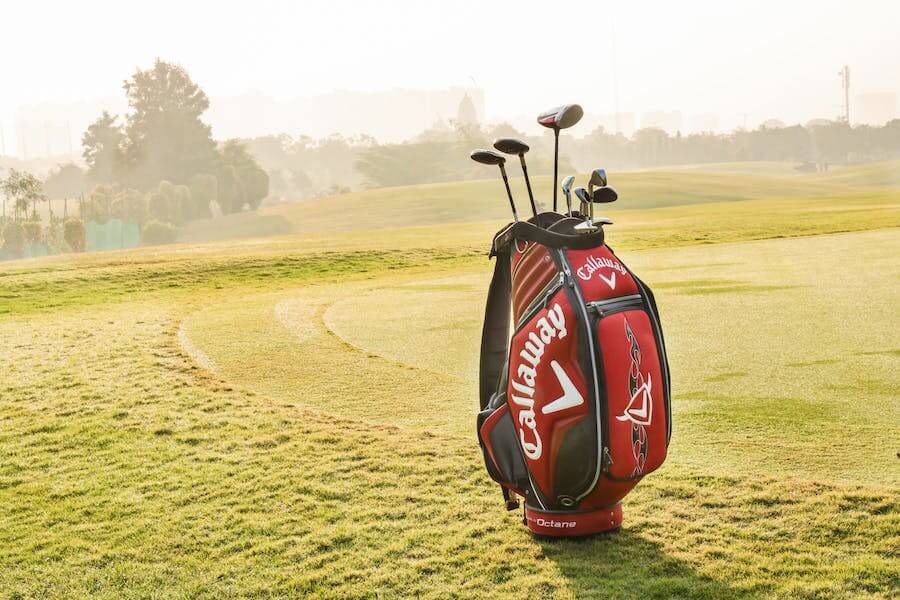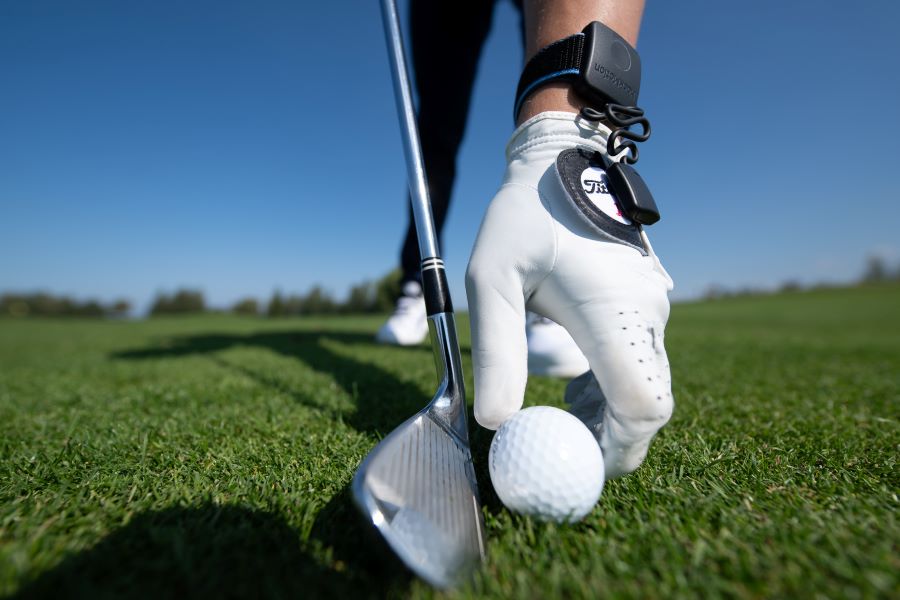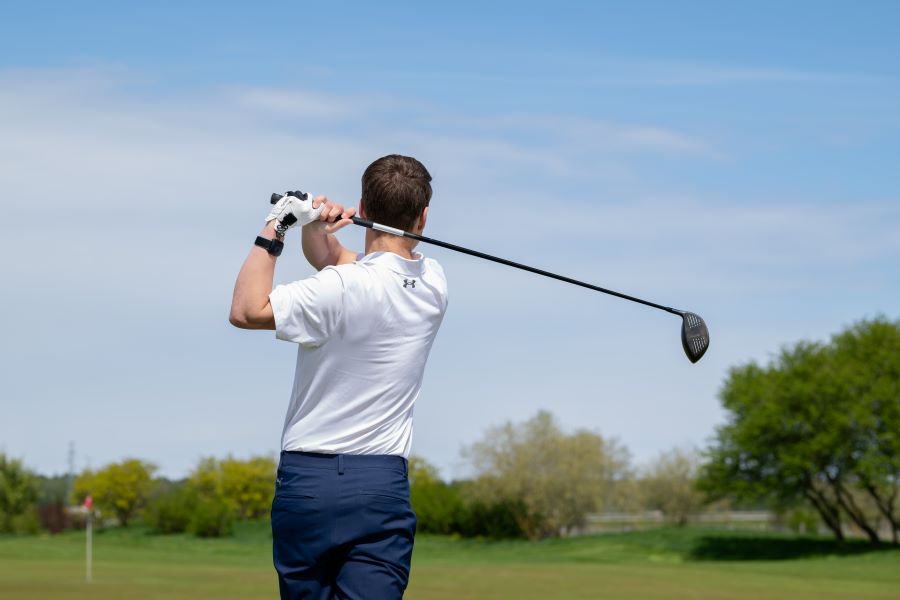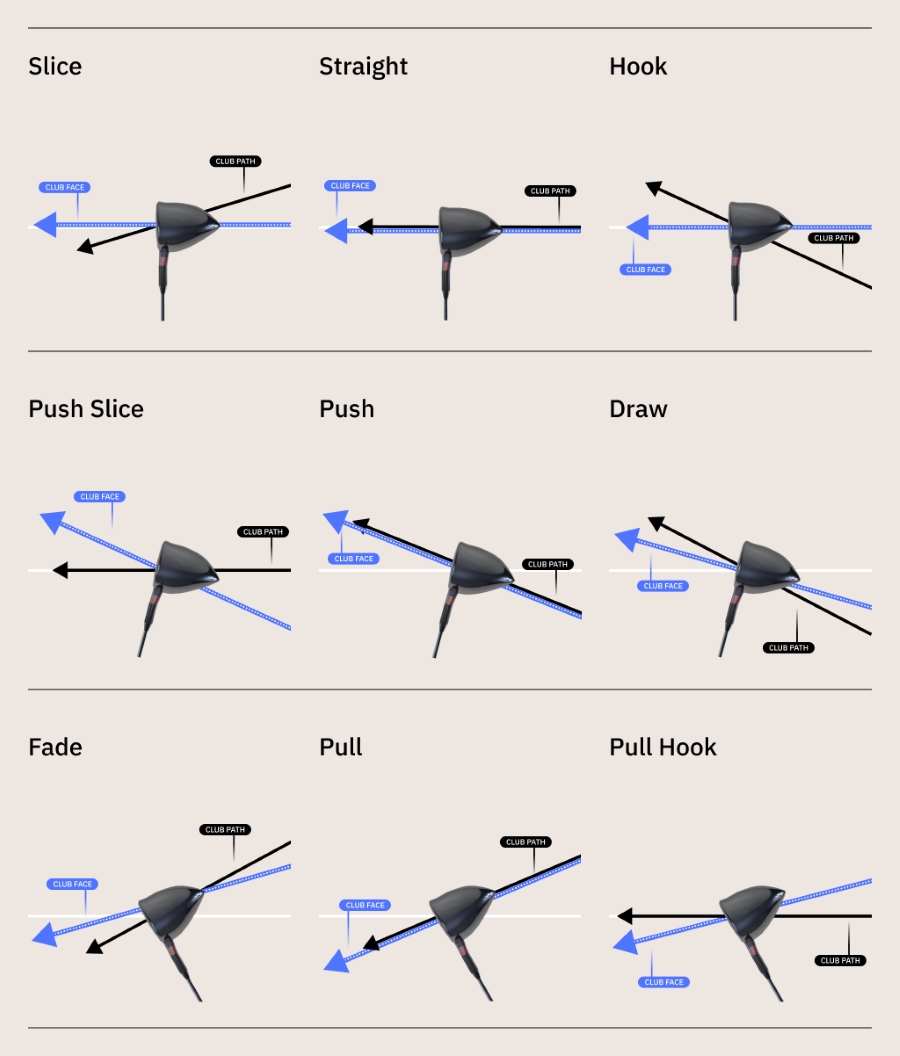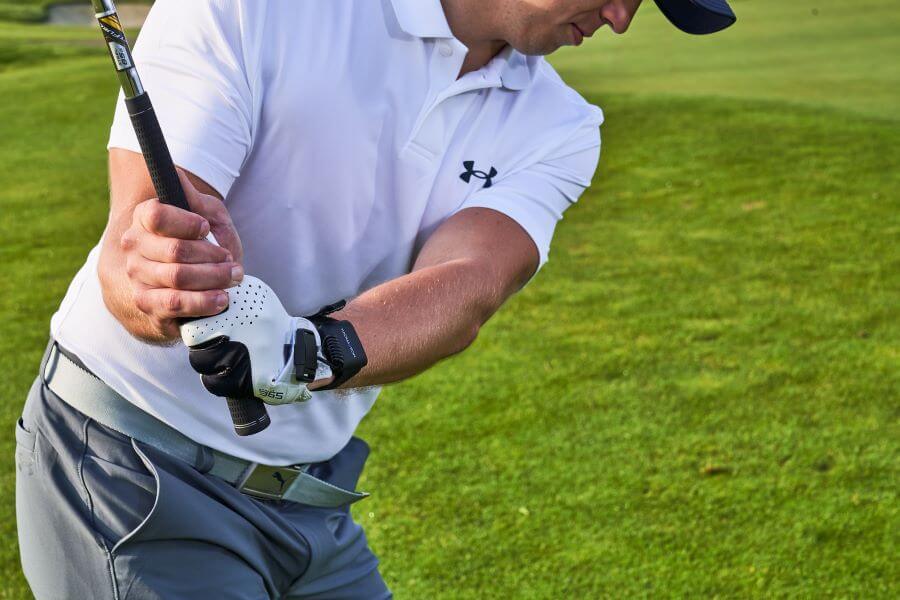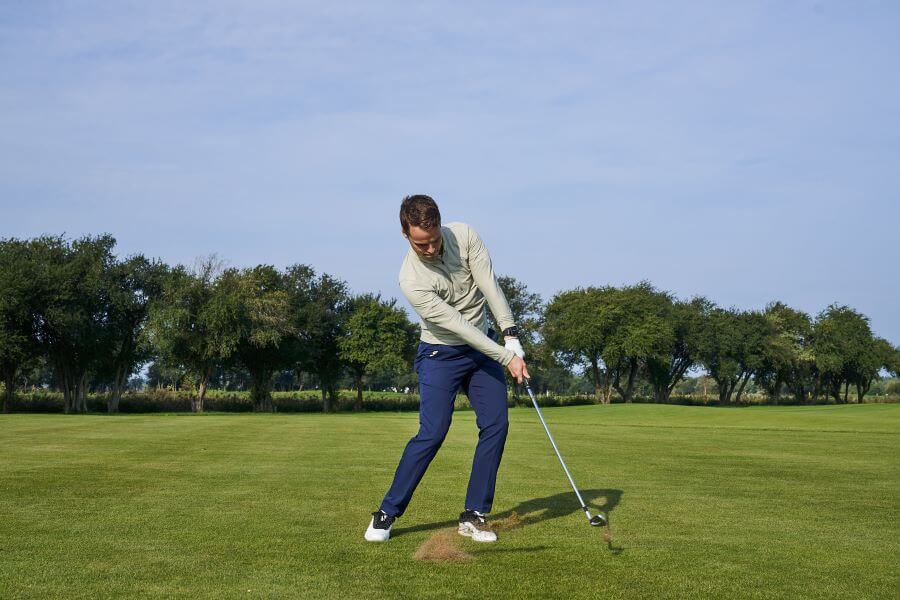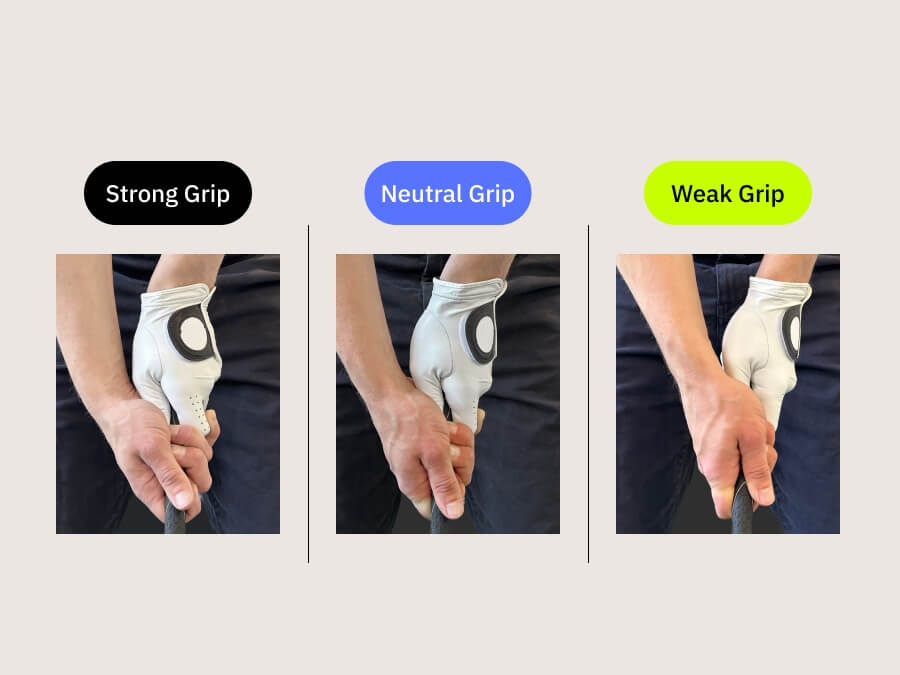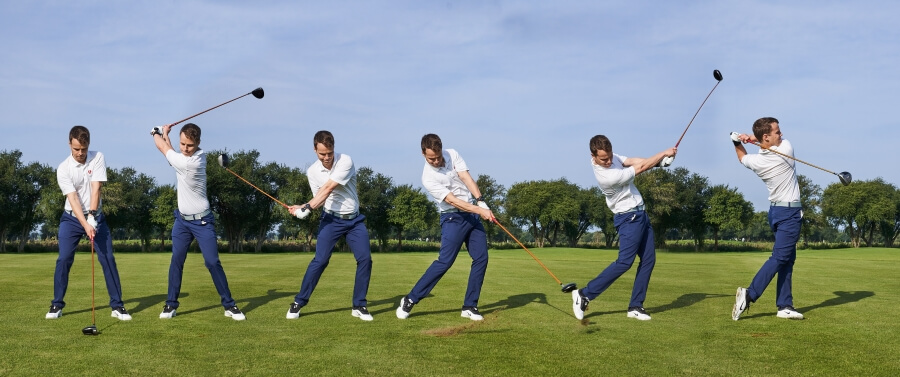How to Shorten Your Backswing in Golf (Without Destroying Your Game)
When I struggle with my golf game, I head to the chipping green. The chipping green lets me focus on the core area of impact and how to start striking the ball with consistency again.
Let’s face it, in golf, a smaller motion is easier to repeat.
This brings up the concept of a shorter backswing in golf and whether or not it could be beneficial for you. Of course, the main issue that golfers run into is a fear of losing distance, but that does not need to be the case.
I’ll show you how to shorten your backswing, keep your tempo and control, and maybe even gain a few yards of distance.
How to Shorten Your Backswing – Key Takeaways
If you don’t have time to go through my complete guide on how to shorten your backswing in golf, here are a few of the most important takeaways.
- A shorter backswing does not mean less power.
- Golfers with restricted mobility can learn to generate power and accuracy with a shorter backswing.
- The more moving parts in a golf swing, the more that can go wrong.
- Proper wrist action and wrist hinge are essential to shorten your backswing and not lose power.
- Many golfers have an easier time compressing the golf ball and incorporating their core and lower body when they keep the backswing shorter.
Contents
What Does Shortening Your Backswing Mean?
A full and complete golf swing is considered to occur when the golf club gets to the parallel position at the top of the swing. With a golf club at parallel, your swing should be complete.
A shorter backswing will not result in the club making it to the parallel position at the top of the backswing. Instead, the club stops short or parallel.
For some golfers that are known to overswing, a shortened backswing could actually look like it stops when the club is parallel to the ground. However, for the most part, we think of a shortened backswing like a ¾ type swing.
Why Would You Want to Shorten Your Backswing?
You may already use a shortened backswing when hitting shorter approach shots to the hole. Maybe you have 60 yards in and can’t hit a full wedge, or you have 140 yards to a hole and are in between two clubs.
Shortening the backswing is a natural solution for golfers trying to take a little off their full distance shots.
However, if you shorten your backswing, it could also be done to control the ball flight and to make better contact. I’ve seen golfers with an incredibly long backswing length hit a pitching wedge 100 yards, and a golfer with a compact and shortened backswing hit a pitching wedge 140 yards.
I think that concept is a good one to get into your mind sooner rather than later!

Advantages and Disadvantages of a Shorter Backswing
Like any change in golf, there are both advantages and disadvantages. Shortening the backswing is no exception.
I’ll go through some of the pros and cons and what you should look out for when shortening the backswing.
Better Feel and Swing Awareness
Do you really know what is happening behind your head when taking a big golf swing? Most golfers lose complete awareness of their club position, wrist position, and sometimes even body and head position.
It’s understandable because our eyes are focused on the ball the entire time.
However, when you can keep your golf swing a little shorter, you have more feel for where the club is and what your body is doing. I equate this to working out. When you don’t work out and head for a run, you just focus on getting from point A to point B.
However, when you are used to doing it, you start to have an awareness of how your foot is moving, where your shoulder is positioned, etc.
The same concept applies when you go from a long backswing to a shorter one.
Less Room for Error
The bigger your golf swing, the more room there is for error. It’s as simple as that. If you take the club back too far, you can get it into a bad position.
Of course, you can work on this until you get things right; you just open the door to more issues in your swing when you take the club back all the way.
Easier to Make Solid Contact
This one is such a simple but probably the most important advantage of shortening your backswing.
Think about playing a game of darts.
Is it easier to hit your target when you stand two feet from the board or 20 feet from the board?
Is it easier to make solid contact with a ball when you swing back ¾ of the way or all the way?
The logic is just there; you can make better contact with the center of the face if you shorten the golf swing. This principle will make the most difference for golfers that are new to the game or golfers that are highly inconsistent in the way they play.
Can Improve Consistency
A shorter backswing is easier to repeat.
If you hit one shot left, another right, and sometimes the ball goes straight, a shorter backswing may get you to hit the ball down the center, at least the majority of the time.
Makes Some Players Get a Little Quick
Whenever I teach a golfer to take a slightly shorter backswing, the first thing they do is speed things up. It must be human instinct to try hitting the golf ball as far as possible, so shortening the backswing just gets into a player’s head.
Just because you are taking a shorter backswing does not mean you need a quicker backswing. Do not change your tempo or your pace, or things will get sloppy.
Can Cause a Loss of Distance without the Proper Wrist Hinge
A concept not talked about widely enough is the proper wrist hinge when it comes to a shorter backswing. If you are a player that hinges your wrists at the very top of your swing, you will lose quite a bit of distance when switching to the shorter swing.
The key is to take a shorter swing with a quicker wrist hinge, and then you can get great power.
You will struggle to keep your yardage without that leverage from the wrist hinge.
So a shorter backswing can cost you distance, but it doesn’t have to.
How to Shorten Your Backswing?
Now, how do you go about shortening your backswing the right way so that it does not destroy your golf game or make you feel uncomfortable on the golf course? I’ll give you the best method to shorten your backswing.
Shorten Your Backswing using HackMotion
The wrists in the golf swing are incredibly important if you plan on shortening your backswing.
Not only are the wrists going to take a more vital role, but they also have to move correctly if you want to see results.
HackMotion makes it incredibly easy to shorten your backswing by collecting data about your wrist motion at impact, top of the backswing, and setup.
- Start by recording some data by taking a regular golf swing.
- Pay close attention to the amount of radial deviation in your backswing; this is where you can keep an eye on the wrist hinge.
- Take a shorter swing, consciously trying to increase radial deviation without overextending your wrist.
- At impact, you will need to have very little extension and, ideally, a little flexion in order to make solid contact with the golf ball.
- Once you analyze your data for your good swing and see what the extension/flexion and radial/ulnar deviation results looked like, you can use the HackMotion audio feedback to set up a practice regime to achieve these results on each swing.
What I love about the HackMotion sensor is that it works in real-time. Most of the time, you will find out after you take a shot whether or not your backswing shortening worked and allowed you to make better contact.
With HackMotion, you can watch an iPad or a phone in real-time and play around with what it feels like to take a shorter swing, hinge, and unhinge your wrists at the proper time. Very few tools in the world of golf give us this kind of real-time data.
Shorten Backswing using Video
Another great use of technology in order to shorten your backswing is to record some swings and see if you are truly taking the club back less.
As I’ve mentioned, many golfers think they are taking a shorter backswing when in reality, they are still going to parallel or beyond in the back. Video, won’t lie.
Take some swings that you believe are shorter, and ensure you are rotating your body and not just swinging your arms back. Some players get confused by the concept of shorter swing and allow the arms to completely take over.
Look for great body rotation, an earlier wrist hinge, and proper tempo throughout your shorter backswing.
Shorten Backswing with Feel
Of course, you can work on your golf swing without technology, but the results can come at a slightly slower pace. When shortening your backswing using feel, you probably want to take a practice swing or a pre-shot routine that is slightly shorter.
Focus on repeating that when you take the actual shot.
Again, I would look for more core and body rotation, a quicker and maybe even more pronounced wrist hinge, and the ability to use ground forces to increase overall power in the shot.
The Best Drills to Shorten Your Backswing
If you are a golfer that likes drills to accomplish new things in your golf swing, here are a few of my favorites for shortening your backswing.
HackMotion Audio Feedback
Once you have collected your data and determined the ranges that help you get the best results with a shorter backswing, then you can use HackMotion audio feedback to create awareness of your wrist positions in the golf swing.
The audio feedback is very simple to set up, and you essentially want to hear the sound from HackMotion as you are swinging; when you stop hearing the sound, your wrist is outside of the range of what we know to be effective.
Even if you don’t collect data first, there are suggested ranges from HackMotion to help you track progress in your game and ensure proper wrist action. Remember that golfers make one of the most common mistakes with shortening a swing is using their arms too much.
Avoid that by using the HackMotion audio feedback and being particularly careful about the extension you add to your backswing.
Drop Foot Back
Set up to hit a golf ball, then drop your lead food (left for the right-handed player) back about six inches or more. When you do this, you will restrict how far back you take the club.
Make sure that you are doing this just to learn the feel and the position you want to be in. On the course, you won’t want to exaggerate this motion quite as much.
Take 20 Yards Off
Another great drill many golfers don’t think about is the 20 yards off drill. Take an 8 iron in your hand and try to take 20 yards off. Chances are you will shorten your backswing as the first way to make this happen.
Of course, you don’t want to stick with the loss of 20 yards, but you can use this drill to find the shorter position. Once you get this position, add some speed, rely on those ground forces, and start to hit the ball just as far from the shortened backswing position.
One Handed Swings
When learning to take a shorter backswing, you should also be aware of creating some lag in your swing. Take some one handed swings where you almost feel like you leave the arms behind and let the lower body turn through the shot.
Start with your right hand only on the club, and then do some with your left hand only. Each time you will want to feel the lower body starting and engaging the swing and the arms lagging behind just a bit.

FAQs
Here are a few of the most commonly asked questions about a shorter backswing in golf.
Is a shorter golf backswing better?
A shorter backswing can be better for ball flight control and consistency in your golf game. Some players that struggle with consistency do well with a shorter backswing.
Do the Pros have a shorter golf backswing?
Some pros, like Jon Rahm, have a shorter backswing. There are successful pros with both short and long backswings; a short backswing is not a guaranteed ticket to better golf.
How short should my backswing be?
A short backswing should be about ¾ the length of a full backswing. A full backswing brings the club back to a parallel position at the top, so you will want to stay short of that when the club is in between perpendicular and parallel to the ground.
How do you generate power with a short backswing?
With a short backswing, you will use a combination of a wrist hinge and proper use of ground forces to generate power. Golfers also work on the strength and rotation of their core to gain extra distance in a short backswing.
Final Thoughts
Learning how to take a shorter backswing is not just a swing change; it can be a great way to learn to control the golf ball and hit a variety of different shots.
Take this information and your HackMotion out to the driving range to see what you can do with a shorter backswing; I think you will be surprised by the results.





